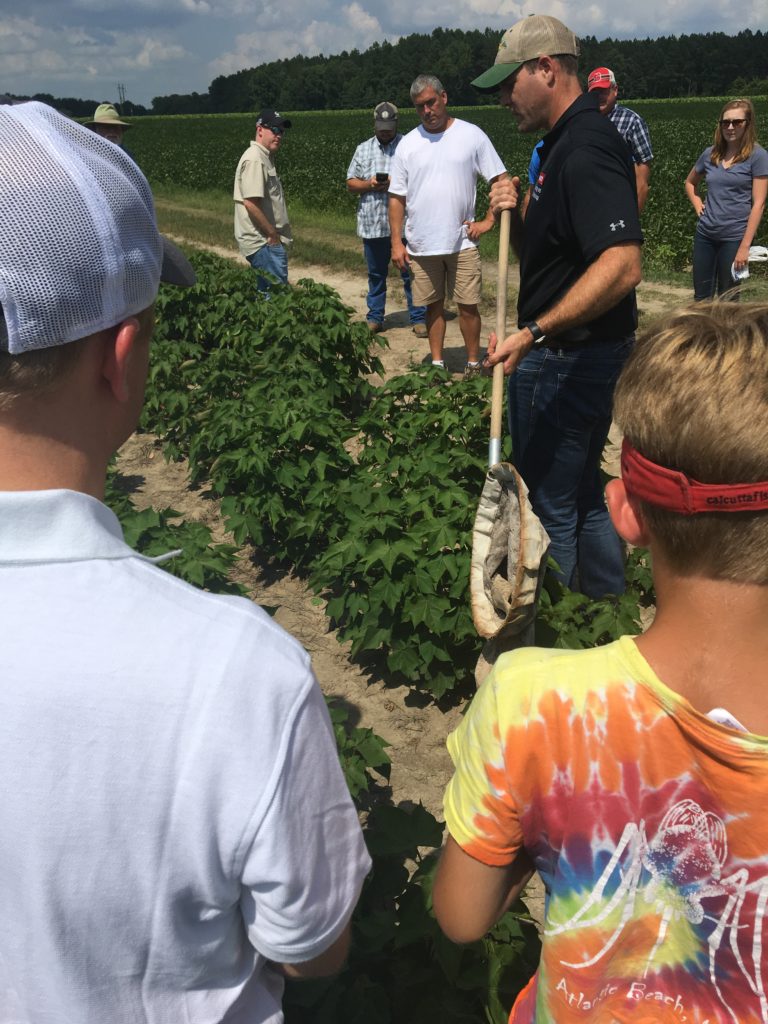To Boost IPM Adoption, Treat It as a Complex Social System
go.ncsu.edu/readext?590358
en Español / em Português
El inglés es el idioma de control de esta página. En la medida en que haya algún conflicto entre la traducción al inglés y la traducción, el inglés prevalece.
Al hacer clic en el enlace de traducción se activa un servicio de traducción gratuito para convertir la página al español. Al igual que con cualquier traducción por Internet, la conversión no es sensible al contexto y puede que no traduzca el texto en su significado original. NC State Extension no garantiza la exactitud del texto traducido. Por favor, tenga en cuenta que algunas aplicaciones y/o servicios pueden no funcionar como se espera cuando se traducen.
Português
Inglês é o idioma de controle desta página. Na medida que haja algum conflito entre o texto original em Inglês e a tradução, o Inglês prevalece.
Ao clicar no link de tradução, um serviço gratuito de tradução será ativado para converter a página para o Português. Como em qualquer tradução pela internet, a conversão não é sensivel ao contexto e pode não ocorrer a tradução para o significado orginal. O serviço de Extensão da Carolina do Norte (NC State Extension) não garante a exatidão do texto traduzido. Por favor, observe que algumas funções ou serviços podem não funcionar como esperado após a tradução.
English
English is the controlling language of this page. To the extent there is any conflict between the English text and the translation, English controls.
Clicking on the translation link activates a free translation service to convert the page to Spanish. As with any Internet translation, the conversion is not context-sensitive and may not translate the text to its original meaning. NC State Extension does not guarantee the accuracy of the translated text. Please note that some applications and/or services may not function as expected when translated.
Collapse ▲Meredith Swett Walker | 3/11/2019 | Entomology Today
To Boost IPM Adoption, Treat It as a Complex Social System
In a perfect world, integrated pest management, or IPM, reduces damage caused by pests, reduces impacts on the environment, and saves farmers money. Using IPM techniques including crop rotation, biological control, and pest monitoring, farmers have saved billions of dollars both in crop losses as well as pesticide costs while reducing negative environmental impacts. Sounds great right? So, why aren’t all farmers embracing IPM?

Why some farmers choose not to practice IPM, and why IPM doesn’t always work as predicted, are some of the questions that Roger Magarey, Ph.D., and his colleagues at North Carolina State University and Texas A&M University hope to answer by considering the “people factor” in IPM. In a new article published in February in the open-access Journal of Integrated Pest Management, Magarey and co-authors make the case that treating IPM as a “social ecological system” can help improve pest management outcomes and convince more farmers to use it.
Pesticides have played a part in making food cheap and plentiful in many parts of the world, but that abundance comes at a price. Pesticides cause an estimated $10-35 billion dollars of damage to human health and the environment in the U.S. each year. Yet, some farmers’ pest management decisions are more influenced by pesticide marketing and market forces than by these impacts. Traditionally, agricultural extension offices have provided information and support for farmers using IPM, but, as funding for these programs declines, more farmers rely on recommendations from agrochemical companies themselves. In addition, many agricultural companies now sell “farm management systems,” which include coordinated seed, pesticides, fertilizers, and post-harvest treatments for a crop. These integrated systems may limit farmers’ ability to use IPM strategies.


